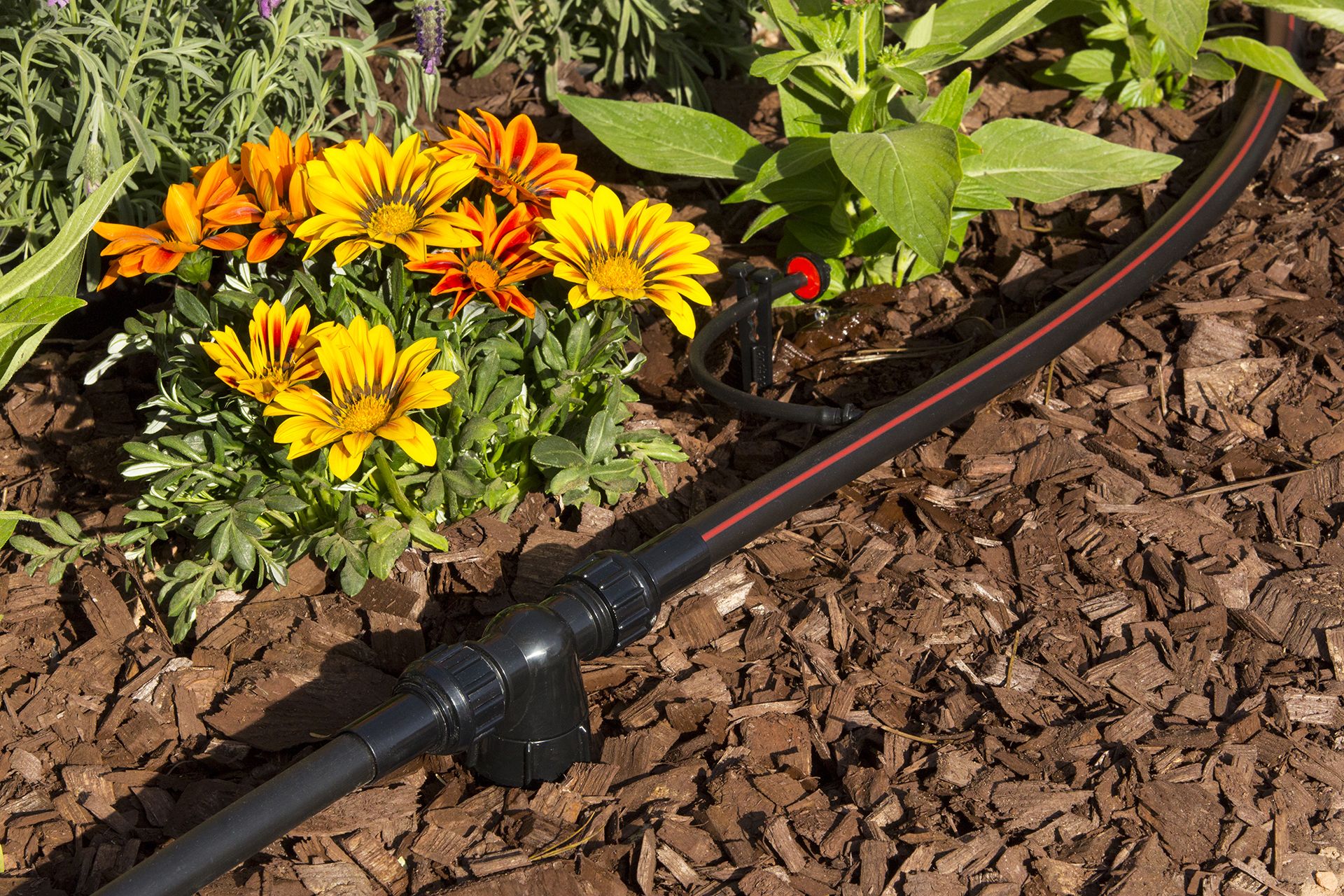Do drought and water restrictions have you struggling to keep landscapes alive? Low-volume drip irrigation, as an alternative to a traditional irrigation system, could be the solution you are looking for. With a drip irrigation system, you can reduce watering—as well as water waste, and water bills.
A drip system delivers water slowly and evenly to plants over extended periods of time through the use of tubing and emitters. This helps provide proper soil moisture in a landscape’s root zone. Trees, shrubs, flowerbeds, sparsely planted landscapes, and even turfgrass can all benefit from drip irrigation.
 Manage flow rates more effectively
Manage flow rates more effectively
The flow rates for emitters can range from about 0.5 - 24 gallons per hour. By releasing water at a controlled rate, emitters help to minimize runoff and reduce evaporation. This increases water penetration into the soil, making the water available where it is needed most—at the roots.
To more effectively manage flow rates, consider installing a controller. By adjusting watering times, you can better manage the penetration of water into the soil. This is an effective step to take to achieve water conservation.
Think of drip irrigation as a win-win-win: a drip system requires little maintenance, which saves you time and labor; reduced watering means a smaller water bill for your clients; and the landscapes you care for receive the water they need.
 How to install a drip conversion system
How to install a drip conversion system
The traditional sprinkler system in a yard can lose a significant amount of water to wind and evaporation as the spray moves through the air. To conserve water and save money at the same time, you should consider installing a drip system.
With a pre-existing sprinkler system, you can use the current sprinkler heads as a conversion point for a new drip system. First locate the sprinklers to determine which heads to cap off or convert to drip. Mark these sprinklers with staking flags of different colors. Verify that each sprinkler head is correctly marked prior to conversion.
Next, confirm that your sprinkler system is turned off. Turn off any automatic controls while you work on the conversion. Remove the sprinkler heads that you wish to cap by removing the spray head from the riser. Attach a threaded sprinkler cap onto the risers you will not use. Remember to verify that each cap is tight to prevent water leaks before you cover them.
Now, remove the sprinkler heads that you wish to convert to drip, and tightly attach a drip distribution or conversion manifold onto each riser. Attach fittings and polyethylene tubing onto each distribution manifold; the tubing should fit comfortably around each fitting, so water cannot leak from any connection point.
Press an emitter into the tubing, then arrange the tubing’s length along the ground to face the root base of the plants requiring irrigation. Turn your system back on at the main water supply, and observe the drip irrigation in action. You should see no leaks or spray from the capped or converted sprinkler heads.
Each manifold has its own pressure regulator to prevent excessive flow through the tubing and emitters. By applying distribution manifolds to the risers, you won’t need to install pressure regulators on the corresponding valves.
With the right design and quality products, drip irrigation can be a low maintenance, water-saving option. To learn more, such as the best methods for determining when and how to use low-volume irrigation or how to calculate precipitation rates in drip systems, visit your local Ewing store. Start saving today.




